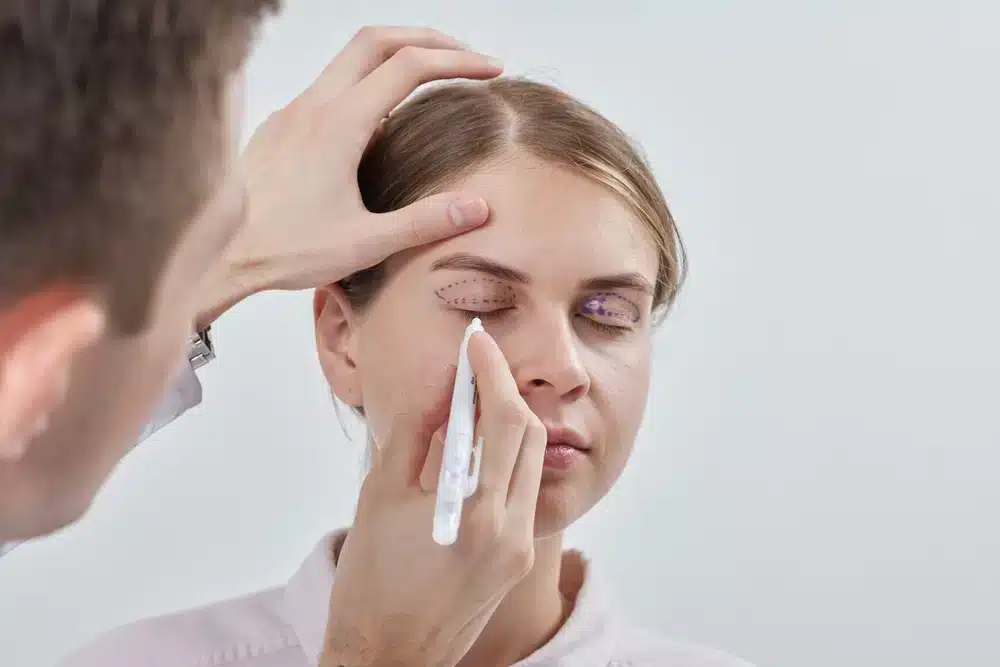With cosmetic surgery, timing is crucial. This is especially true for blepharoplasty, a surgery sometimes referred to as upper eyelid surgery that improves the appearance of the eyes by addressing upper eyelid issues including removal of extra upper eyelid skin and fat from the eyelids. Sometimes drooping eyelids cause peripheral vision problems; thus aesthetic surgery can also help with those problems. Leading face plastic surgeon Dr. Kirk Lozada, who specializes in both upper and lower blepharoplasty, frequently gets asked, “What is a good age for eyelid surgery?” The response is complex, hence in this post, we will discuss the elements influencing the ideal timing for this transforming operation.
Understanding Blepharoplasty
Blepharoplasty—also known as an eyelid lift or double eyelid surgery—can improve face appearance by treating issues including drooping or saggy eyelids, bags beneath the eyes, and excess skin or wrinkles on the lower eyelid.
Particularly upper blepharoplasty, this blepharoplasty surgery removes excess eyelid skin and muscle tissue thereby defining the upper eyelid crease.
Why is Blepharoplasty done?
Those who wish to accentuate their facial features and alter the look of their eyes could find blepharoplasty to be a perfect choice. You could look younger and more rested following a blepharoplasty. Both cosmetic and practical advantages abound with this surgery. Vision issues and poor peripheral vision brought on by droopy eyelids could cause mishaps including tripping or falling. Through better eyesight, blepharoplasty helps to reduce some eyelid concerns.
After having blepharoplasty surgery, many patients say their self-esteem has increased; this helps them feel more confident about their appearance, therefore greatly enhancing their quality of life in other spheres as well. Those wishing to improve their appearance and also boost eye health and safety can find a safe and successful answer in blepharoplasty.

The Right Age for Blepharoplasty
It Is Not Only About Age
Indeed, aging does a lot to our eyes; while age is important, Dr. Lozada stresses that the appropriate timing for blepharoplasty surgery is more related to one’s demands and objectives. Determining if someone would be a good candidate for blepharoplasty mostly depends on factors including genes, lifestyle, and general health.
The Common Range of Age
Most individuals having blepharoplasty fall between the ages of thirty and sixty. If droopy or baggy eyelids run in your family, though, the surgery early could help. On the other hand, fit people in their 70s or beyond could also safely have blepharoplasty.
Before and After Blepharoplasty Photos
* All patients are unique and individual results may vary.
Individualized Evaluation
Regardless of age, a customized initial consultation with Dr. Lozada will help you ascertain whether you qualify for blepharoplasty. He will review your medical issues and degree of extra skin to see whether or not you are a suitable candidate for blepharoplasty and whether it will help reach your aesthetic goals.
Medical Evaluation
Dr. Lozada will evaluate you for health and preparation for your blepharoplasty. This includes discussing your medical history, testing your eyes and vision, and maybe performing additional tests. This complete checkup ensures your good condition for the surgical procedure.
Setting Expectations
Setting realistic goals is essential when considering blepharoplasty. While the procedure can greatly improve your appearance and may boost your self-confidence, it cannot alter your fundamental facial structure or stop the aging process. Remember that achieving your entire goal may require more than one cosmetic procedure.
Philadelphia’s Premier Double Board Certified Facial Plastic Surgeon & Rhinoplasty Specialist.
Dr. Lozada is a facial sculpting expert who can help you achieve your desired aesthetic results.

Recovery Process
After surgery, you will enter the recovery phase in which suitable rest and care habits—such as cold compress application—can help in healing and reduce swelling for the fastest recovery. One would expect some temporary blurriness of vision and discomfort, together with bruising and swelling all around the eyes.
The first few days after surgery determine whether smooth and complete recovery results. This would significantly benefit from following Dr. Lozada’s post-operative guidelines.
Your recovery strategy will be customized to your body’s natural healing rate, overall health, and specific treatment parameters. Promoting healing and minimizing probable issues depend on exactly following this schedule.
One should expect realistically at this moment. The complete effect of eyelid lift will show up over several weeks or perhaps months, even though the swelling and bruises go down immediately. During this time, your eyes will continue to heal and adapt to the changed eyelid contour. Though it’s surgery, many people choose blepharoplasty since it typically leaves minimal scarring.
Conclusion
In the quest for the ideal age for blepharoplasty, remember that age is indeed just a number. The right time for blepharoplasty depends on a multitude of factors, including your personal aesthetic goals, overall health, and lifestyle. Dr. Kirk Lozada, with his wealth of experience and a patient-centric approach, is dedicated to helping you navigate this journey. After all, there’s no universal “right age” for any procedure. The best time for blepharoplasty is when you, as an individual, are ready—both physically and emotionally—for the transformative journey towards a more youthful and confident you, free of the natural signs of aging.


